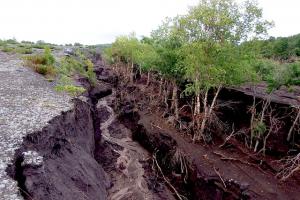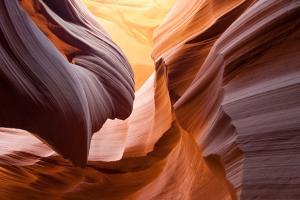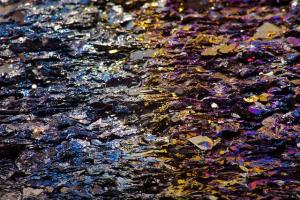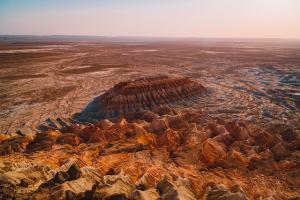Physical Characteristics of Rocks
Definition:
Geologist define rock as aggregates or mass composed of one or more commonly, several of minerals. There are few exceptions to this rule: not all rocks are composed of minerals-for example, coal. Engineers (or contractor) define rock to be hard, durable material that can't be excavated without blasting. The definition is based on strength and durability.
Minerals are naturally occurring inorganic substances of more or less definite chemical composition, displaying more or less definite physical properties. As the basic constituent of rock, minerals control much of rock behavior. Some minerals are very strong and resistant to deterioration and produce rock with similar properties, while others are much softer and produce weaker rock. More than different 2000 minerals are present in the earth's crust. They can be identified by their physical and chemical properties; by standard tests; or by examination under microscope.
Characteristics of Rocks
- Colour
- Streak
- Hardness: Moh's scale of hardness
- Cleavage
- Fracture
- Luster
Color:
- Some minerals have characteristics color due to composition of the minerals and the arrangement of the constituent atoms: for example black color of magnetite, green of chlorite and brassy yellow of pyrite
- Minerals like quartz and calcite have variable color
- Color can?t be sole identification property
Streak:
- Color of mineral in powder form is called streak
- Powder is obtained by crushing the mineral.
- Color of the streak differs from color of mineral: for example the color of pyrite is brass yellow and its streak is dark green.
Cleavage:
- The cleavage of the minerals is its capacity to split more readily in certain directions than in others, due to the arrangement of the atoms.
- Minerals break with ease producing smooth surfaces is called perfect cleavage. It can be either good, distinct, indistinct and imperfect.
- Some minerals such as mica have perfect cleavage in one direction. The feldspars, which is the most abundant of all minerals, have two cleavages.
Luster:
- Appearance of mineral in ordinary light (that is the appearance due to reflected light). Luster may be metallic, glassy, earthy, pearly or silky
- If the minerals looks metal as do galena and pyrite, its luster is said to be metallic. If the minerals looks glassy, like quartz, its luster is glassy.
Hardness:
- The hardness of a mineral, as commonly determined on fresh material, is measured by its ability to resist scratching. If a mineral is scratched by a knife, it is softer than the knife. If it cannot be scratched by a knife, the two are equal hardness or the mineral is the harder.
- In order to have a standard method of expressing hardness of minerals, a simple scale, known as the Mohs scale, has been universally adopted.
- In sequence of increasing hardness from 1 to 10, the following minerals are used as standard of comparison:
- Talc, Gypsum, Calcite, Fluorite, Apatite, Orthoclase (feldspar), Quartz, Topaz, Corundum and Diamond
Other Characteristics of Rocks:
Crystal Form: Internal atomic arrangement in definite geometric patterns is sometimes outwardly expressed in crystal form.
Specific Gravity is meant the weight of a substance compared with the weight of an equal volume of water. The specific gravity of quartz is 2.65. Some minerals are heavy than the others. The specific gravity of majority minerals range from 2.55 to 3.2.
Magnetism: A few minerals are attracted by a magnet. Of these minerals, magnetite, and pyrrhotite are the most common examples.







